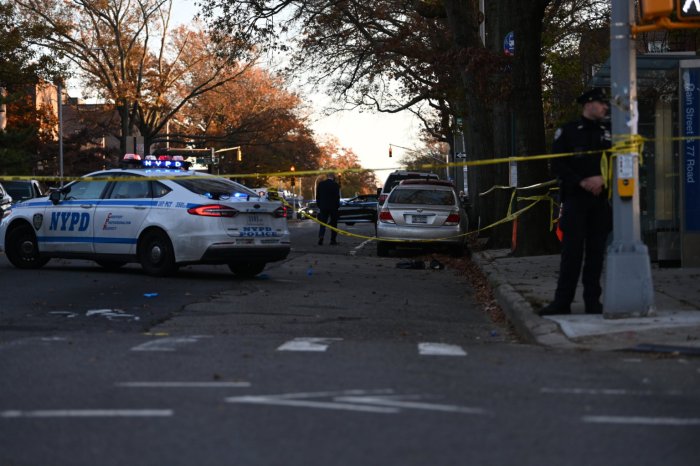By Alex Davidson
Saying state racing officials have done little to stem alleged criminal activities at Aqueduct Race Track since his office issued a report last month, the state attorney general again called for reforms on how race tracks are managed by the New York Racing Association.
State Attorney General Eliot Spitzer issued a statement June 24 echoing his earlier report that said New York Racing Association officials were to blame for continued financial and operational problems at its three race tracks: Aqueduct in Ozone Park; Saratoga in Saratoga, N.Y.; and Belmont in Elmont, N.Y.
“I had hoped that the report would be a catalyst for reform at NYRA,” Spitzer said of his office's investigation that lasted from 2000 to 2003. “Instead NYRA officials insist that no one understands racing but they.”
Spitzer's report, which was released in early June and examined both management and employee activities, documented alleged cases of money laundering, illegal gambling and income tax fraud.
In his June 24 statement, Spitzer cited poor management by NYRA officials as a reason why during the past 11 months 22 NYRA employees had been indicted and 19 convicted for schemes ranging from tax evasion to identity theft.
The focus of the poor management allegations was NYRA Chief Operating Officer Terry Meyocks, who Spitzer alleged accumulated exorbitant amounts of personal travel and entertainment expenses at the taxpayers' expense.
NYRA CEO Barry Schwartz, who heads up the state not-for-profit private stock corporation, responded to Spitzer's report by saying the attorney general's three-year investigation was “bungled” and used unusual methods, such as wiretapping, to survey race track employees.
He countered Spitzer's claims about a weak management structure that could foster crimes by saying the association is in discussions with a security-consulting firm to conduct an evaluation of its money control and security procedures.
“The attorney general's investigators who wrote this report are aware of the entire history and truth behind NYRA's activities to detect and deter criminal activity of all natures at its racing facilities, yet they have chosen to remain silent about what they have learned,” Schwartz said. “Such unfairness has no proper place in one of our state's highest elected public offices.”
Spitzer, however, characterized that response as inaccurate. He said plans to halt illegal elements at the three race tracks, such as new machines to count a day's receipts, are too little, too late.
“I stand by the report and its conclusions, and I call upon NYRA's board of trustees to address the fundamental structural problems we have diagnosed,” Spitzer said. “Similarly, I call upon the state Legislature and the executive to address the lack of oversight at these major public assets.”
Since 1999, the total amount wagered on NYRA races from all sources exceeds $3 billion per year, Spitzer said in his report. During the past nine years, NYRA's revenues have averaged more than $250 million per year, but from 1993 through 2001 it posted financial losses every year but two.
During that nine-year period, NYRA's total expenses averaged 103 percent of its net revenues, helping the organization accumulate a deficit of more than $50 million by the end of 2001, according to Spitzer's report.
Reach reporter Alex Davidson by e-mail at TimesLedger@aol.com or by phone at 718-229-0300, Ext. 156.





























